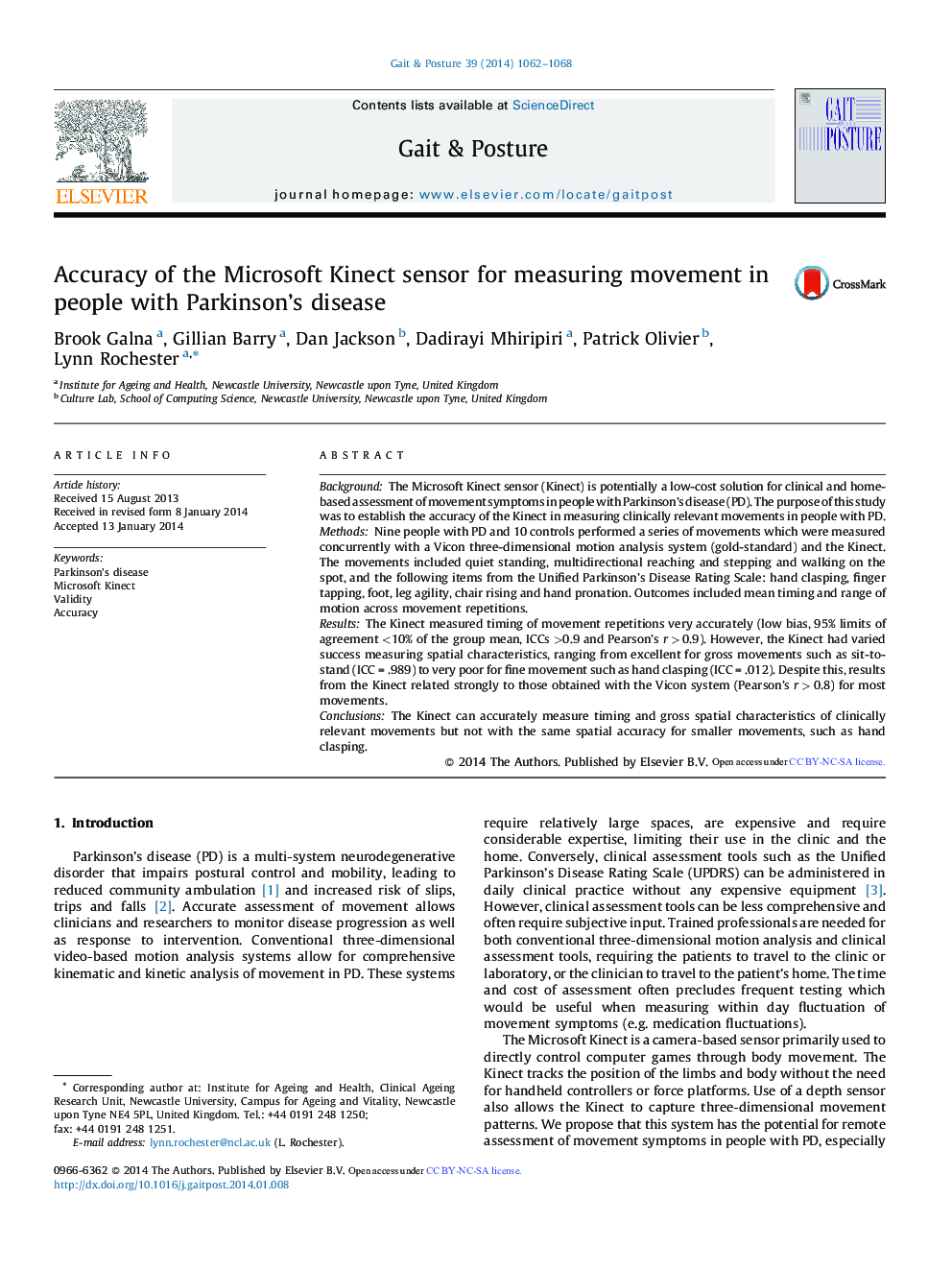| Article ID | Journal | Published Year | Pages | File Type |
|---|---|---|---|---|
| 6206297 | Gait & Posture | 2014 | 7 Pages |
â¢We tested the accuracy of Kinect to measure motion in Parkinson's disease.â¢The Kinect accurately measured the timing and range of large movements.â¢The Kinect did not measure smaller movements as accurately.â¢The Kinect has potential to be a low-cost, home-based sensor to measure movement.
BackgroundThe Microsoft Kinect sensor (Kinect) is potentially a low-cost solution for clinical and home-based assessment of movement symptoms in people with Parkinson's disease (PD). The purpose of this study was to establish the accuracy of the Kinect in measuring clinically relevant movements in people with PD.MethodsNine people with PD and 10 controls performed a series of movements which were measured concurrently with a Vicon three-dimensional motion analysis system (gold-standard) and the Kinect. The movements included quiet standing, multidirectional reaching and stepping and walking on the spot, and the following items from the Unified Parkinson's Disease Rating Scale: hand clasping, finger tapping, foot, leg agility, chair rising and hand pronation. Outcomes included mean timing and range of motion across movement repetitions.ResultsThe Kinect measured timing of movement repetitions very accurately (low bias, 95% limits of agreement <10% of the group mean, ICCs >0.9 and Pearson's r > 0.9). However, the Kinect had varied success measuring spatial characteristics, ranging from excellent for gross movements such as sit-to-stand (ICC = .989) to very poor for fine movement such as hand clasping (ICC = .012). Despite this, results from the Kinect related strongly to those obtained with the Vicon system (Pearson's r > 0.8) for most movements.ConclusionsThe Kinect can accurately measure timing and gross spatial characteristics of clinically relevant movements but not with the same spatial accuracy for smaller movements, such as hand clasping.
